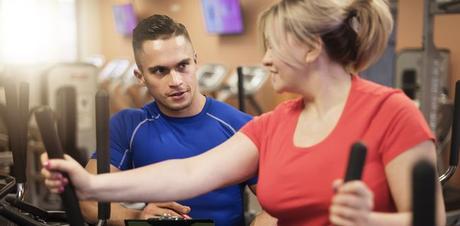 You could spend endless hours at the gym or pay a personal trainer to help you lose weight, but with a little knowledge under your belt, you can start to shrink your waistline ASAP! Knowing the right exercises to do, the frequency of exercise, and the total duration is half the battle in getting your weight loss regimen set up.
You could spend endless hours at the gym or pay a personal trainer to help you lose weight, but with a little knowledge under your belt, you can start to shrink your waistline ASAP! Knowing the right exercises to do, the frequency of exercise, and the total duration is half the battle in getting your weight loss regimen set up.
Here are five exercises that promote weight loss and build a lean, fit body:
1. HIIT body weight workout
HIIT, otherwise known as high intensity interval training is a work out based on intervals that utilize the intensity of your body’s movements to help burn calories more efficiently. The benefit of this type of workout is that you can do it anywhere, and do it quickly.
To blast fat, and tone muscle from head to toe you can utilize your own body weight and a few simple exercises over a twenty-four minute period to get your heart rate up, and burn lots of calories.
A typical 20-25 minute HIIT work out done at high intensity can burn between 300-650 calories.
Try the following routine in a 2:1 ratio.
That means you will work out as hard as you can doing the movement described for two minutes, then rest for one minute before going directly into the next set of movements for another two minutes.
You repeat this 2:1 cycle of work followed by rest until twenty four minutes are up.
Burpees
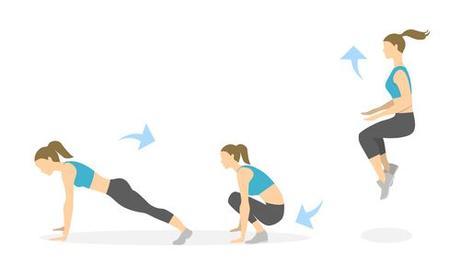
Start in plank position, jump forward to plant your feet behind your hands (you’ll look like a frog), then jump straight up as if you are trying to make a free-throw shot at a basketballhoop. Squat back down, and jump back to plank, then repeat. You can see how to do a basic burpee correctly, here.
Squats
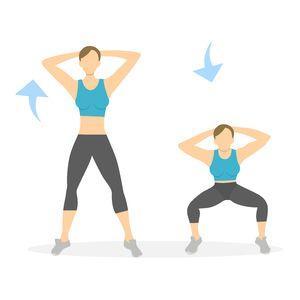
Stand with your feet hip-distance apart, and your spine straight. Begin to squat as if you were going to sit down in a chair.
You can even use a chair as a reference point if you like, or go into a deeper squat by allowing your hips to fall below the knees. Keep your arms straight out in front of you, and as you sit down your chest will be forward, over the knees. Focus on keeping your hips and heels anchored as you sit, targeting your leg muscles and buttocks.
The belly should stay drawn in, to also work the core. Don’t hold your breath. Hold your squat position for three full breaths, then rise to standing. Repeat.
A great basic tutorial on how to squat correctly can be found here.
Skater’s Lunges
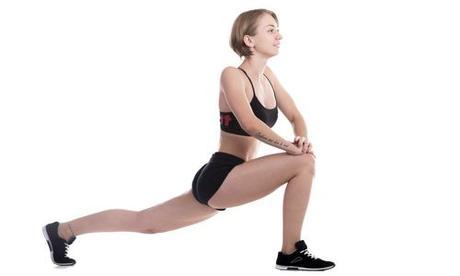
Stand with your arms outstretched. Now draw your feet wide so that they line up beneath your hands. Allow your arms to drop back down to your sides.
Draw all of your bodyweight to the left leg, as if you were going to push off on a skate, or ski, lunging deeply over the left knee.
The opposite leg will straighten out. Be sure to keep your knees in alignment with your toes. Push off, back to a standing position and draw all of your weight to the opposite side, now lunging into the right leg.
Alternate sides holding for three breaths on each side in a “skater’s” lunge. Repeat, alternating sides.
High Knees
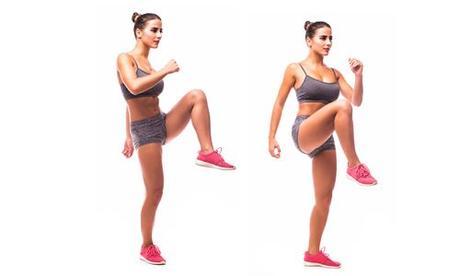
Stand upright, with arms relaxed by your sides. Begin running in place, drawing your knees as high as you can, parallel to the floor.
Your arms can swing as they would when you are running normally. This exercise targets your core, while boosting your cardio.
Keep your belly in as you breathe deeply. Repeat as fast as you can for two minutes’ duration. Watch how to do a standing high-knee here. This movement can be developed into other high-intensity exercises, too.
2. HIIT cardio
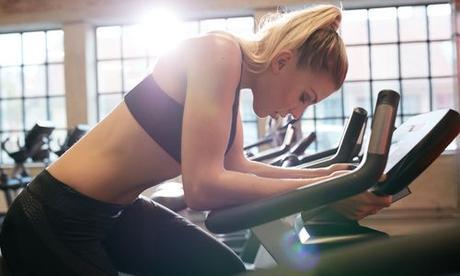
In order to get an excellent caloric burn with a HIIT workout, you simply add more of a cardiovascular element.
This ensures that your heart rate stays high for the duration of your workout. Some of the best HIIT cardio moves are super basic, so practically anyone can do them.
They require no equipment, though you can add handheld weights if you want to add to their intensity.
For a great HIIT cardio workout that can burn up to 600 calories in 24 minutes try the following using a 1:30 ratio.
This means you will workout doing one exercise for one minute, rest for thirty seconds, and then move to the next movement listed. You will repeat, with 30 seconds of rest between each movement, starting again at the top until you have worked out for 24 minutes.
It is a good idea to start with a 2-5 minute warm up so that your body can ease into elevated cardio levels with some simple marches, or slow jumping jacks.
This will also warm up your muscles and prevent injury.
Split-jump lunges
From a simple march, add a step back into lunge position, and then jump back to standing. Switch legs, and jump back into a lunge again with the opposite leg forward.
Try to keep a little space between the feet (approximately hip’s distance) so that you don’t end up “walking a tight rope” and fall over as you jump into your split-leg lunges.
Repeat alternating sides. Try to have good form, more than trying to do more repetitions within the 1-minute period.
Split-leg jumping jacks
Adding on to the traditional jumping jack, with the legs jumping out and the arms going up, in between the “out” move, you can take your right leg forward, and your left leg back, allowing the right arm to swing forward with the right leg, and the left arm to swing back.
Switch sides, going from a standard jumping jack to a left-jack, followed by a right-jack. This is also called a cardio jack. You can also try up to 39 different variations of this jumping jack to keep your cardio HIIT workout interesting, and those calories burning fast.
Air jump rope
Imagine holding a jump rope in each hand. Simply jump up and down moving your arms as if you were skipping rope.
No jump rope is actually needed, but you can add one if you would like. This is one of the most common cardio workouts used by boxers.
3. Traditional weight training
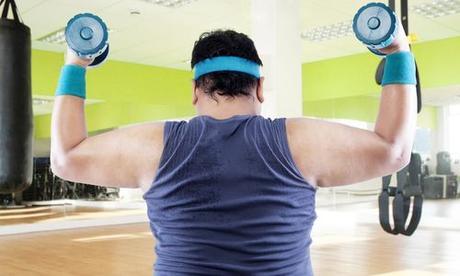
There are literally thousands of exercises you can do with just a set of 15-50 pound weights. You don’t need a trainer, or fancy gym equipment.
Though, access to a gym can help. In fact, many gym machines make your weight lifting workout easier, so you don’t burn as much fat or calories. Free-weights, as they are called by body builders, are ideal for burning the most calories in the shortest amount of time.
It may not seem like you are burning fat when you weight train, but muscle requires more calories to grow and maintain than fat cells, do, so even though your heart rate may not climb as high while you are weight-lifting, you will continue to burn fat even when you stop working out. Any time you create an increase in muscle mass, also called muscle hypertrophy, you create a higher metabolism.
This means your body will burn calories at a faster rate no matter what you are doing.
That being said, even moderate weight training usually puts your heart rate at about 135-145 beats per minute which is considered an ideal fat-burning zone.
Choose a weight that is difficult to lift or squat with for 8-12 repetitions, but no more.
Each set that you do will be only 1-20 seconds long at first, so you only need to be able to move the weight for this short period.
As you get stronger, you can move into lifting or holding the weight for 20-40 seconds, which will cause both muscle hypertrophy (the break down and subsequent build-up of muscle) and fat burning.
When you are ready – the 20-40 second hold is an ideal place to aim for when weight training. When you can hold each set (remember you only have to do 8-12) for 20-40 seconds, then you will build lean muscle while also creating a metabolic effect that burns fat. Try the following 4 weight lifting basics for a full body workout.
- Dead Lifts – Use free weights instead of a bar.
- Dips – You can use a bench or two chairs in your own home.
- Front Squats – Use smaller weights, and build up to heavier ones.
- Chin Ups – You can use a bar placed across a door jam or use a door.
4. Running (interval training)

You can burn 8.5 calories a minute when running at a moderate pace, but if you add some intervals to your run, count on torching extra calories, and burning another 4 percent of your body fat.
This happens because the body likes to be on cruise control, and adapts to whatever workout you do.
If you add some speed or challenge, like running up a hill, instead of just running on flat ground for a few minutes in a 30-60 minute run, your body has to work harder to adapt to the new environment. You can try running at a comfortable pace for ten minutes, then sprinting for two. Run again at a comfortable pace, and sprint for three.
Those extra five minutes of intensity will help burn calories like you can’t imagine!
5. Hiking

Hiking is a wonderful exercise for burning calories, especially if you choose the right terrain.
If you add a ‘pack’ you can burn even more calories. A vigorous hike done over one hour, with a pack added can burn up to 550 calories.
It’s all about intensity, though, to get the most out of your hike. If you want to burn calories even after your hike is over, plan to hike at least 45 minutes with a ten-pound back-pack on uneven terrain.
This forces you to use your muscles in different ways than if you were walking on flat ground. Stay hydrated, and try to keep your pace up. Researchers from the American Council for Sports Medicine found that if you hike at a high intensity for 45 minutes, you’ll burn an additional 190 calories later in the day.
That means one good hike can burn 740 calories over a 24-hour period.
Conclusion
Of course there are many more exercises you can do to burn calories quickly, like dancing, martial arts, skiing, and even scuba diving.
The idea is to add intensity where you can, and to always challenge your body in new ways. A combination of cardio and weight-training will give you the best fat burn both during and after your workout – so be sure to try to add at least 2 of each workout type to your week, twice a week, totalling 4 days of workout, and 3 days of rest so that your muscles can repair and grow.
Your weight loss goals will be met easily with these calorie-torching workouts.
Read:-

